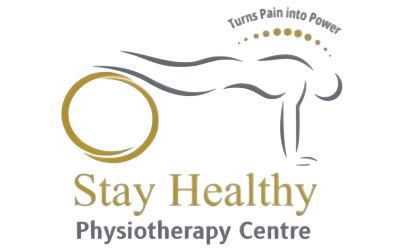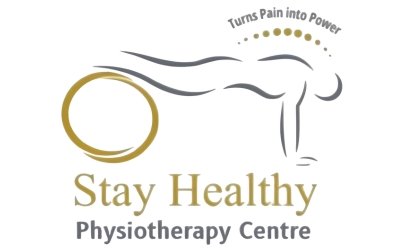Frequently Asked Questions
About Physiotherapy
Physiotherapy, also called physical therapy, is a treatment to restore, maintain, and make the most of a patient’s mobility, function, and well-being. Physiotherapy helps through physical rehabilitation, injury prevention, and health and fitness. Physiotherapists get you involved in your own recovery by setting a pre-defined track for the treatment. A physio may ask you to do certain exercises on your own in order to recover quickly. Physiotherapists use manual therapy and various modalities according to the patient’s condition.
A physiotherapist can treat various issues like Sports injuries, Musculoskeletal, Neurological issues, pediatric care, and other problems as well depending upon the specialization of the physiotherapist. Some Common issues that can be treated by a physiotherapist are as follows :
Neck and back pain is caused by problems in the muscles and skeleton. Problems in the bones, joints, muscles, and ligaments, such as arthritis. Fatigue, pain, swelling, stiffness, and loss of muscle strength. Loss of mobility because of trauma to the brain (Stroke) or spine, or due to diseases such as Parkinson’s disease and multiple sclerosis.
First of all, the assessment of the patient is done by a physio who sets a track for the process of the treatment. There are different approaches used in physiotherapy treatment however it may vary from patient to patient depending upon the condition of the patient and the type of treatment needed. The common procedure includes the following:
- Manual Exercises - Soft Tissue Mobilization - Electrotherapy - Heat Therapy - Taping for sports injuries - Ultrasound
Yes, there are various specializations in physiotherapy that allow physiotherapists to focus on specific areas of healthcare based on patient needs and conditions. which deals with musculoskeletal problems such as fractures, arthritis, back and neck pain, and post-surgical rehabilitation. Pediatric Physiotherapy focuses on children and infants with developmental delays, cerebral palsy, muscular dystrophy, and other congenital conditions. These specializations help physiotherapists deliver more focused and effective care, improving patient outcomes across all age groups and medical needs.
- Manual Exercises - Soft Tissue Mobilization - Electrotherapy - Heat Therapy - Taping for sports injuries - Ultrasound etc.
Choosing Physiotherapist
A physiotherapist focused on long-term wellness will go beyond quick fixes. They will start with a detailed assessment to identify not just the symptoms but the root cause of your problem—be it poor posture, muscle imbalance, repetitive strain, or lifestyle habits. From there, they will design a personalized treatment plan that evolves over time, incorporating a mix of therapies such as manual therapy, strengthening exercises, mobility training, postural correction, ergonomic advice, and education for self-care.
A therapist who is focused only on short-term relief may rely heavily on passive treatments like heat packs or ultrasound therapy without equipping you to prevent future issues. That’s why it’s essential to choose someone who views recovery as a journey—not a quick destination.
So, when selecting a physiotherapist, always ask about their approach to long-term outcomes. The right one will prioritize your overall well-being, helping you return not only to full function—but stay that way too.
Finding the right physio depends on the condition of the patient and the type of treatment the patient has to go through. Suppose there is a case of post-surgery, so this patient will be assigned to an ortho physiotherapist, and in some critical cases like a patient with post-stroke is not only assigned with a neuro physio but CBP will make sure that he gets an experienced physiotherapist. Let us explain with one more example; suppose there is a kid who is suffering from physical pain or injury so he will be assigned to a pediatric physio. In some cases, the patient is not aware of what exactly he is facing, whether it is a muscle spasm or muscle strain so in that case, the physio takes an assessment in which gets to know the approach of treatment.
That’s an important question! A top-notch physiotherapy clinic isn’t just about a few stretches and massages. It should be equipped with the latest technologies like ultrasound, heat therapy, and advanced exercise equipment. But even more important is how they use it. Are they giving you a one-size-fits-all routine, or designing a treatment plan specifically for your body, your pain, and your goals? A truly modern clinic combines updated tools with a personalized approach—because your recovery isn’t just clinical, it’s personal.
Yes, if a physio suggests you do exercises on your own then start doing the same. Sometimes the exercises are practiced by the physio at the time of treatment which is supposed to be done on your own without having an eye of any physio. The reason for suggesting the exercises to be done on your own is only that the recovery moves at a fast pace and there is a relief in pain. Sometimes patients can also consult YouTube videos or online exercise programs, we strongly advise against that.
Physiotherapy at Clinic
No, it is not mandatory to get the physio treatment prescribed by the doctor. In some cases, the doctor prescribes physiotherapy to the patient which is good but we also make sure that our physio makes the assessment of the patient which helps him/her to diagnose the issue and accordingly start the treatment. Our practice is to give the safest and best possible patient-centric care.
In some cases, when a patient’s mobility is an issue, there is no option but to take physiotherapy at home. In other cases, It depends on the choice of a patient whether he wants the treatment to be done at home or clinic. But in some cases, treatment requires a different type of equipment which can be available only at the clinic for which it is better for patients to visit the clinic for better results. Apart from this, a senior physio is also available at the clinic who can keep an eye on the undergoing treatment. But if a patient wants treatment to be done at their home & treatment requires only manual therapy or portable instruments, we can provide home care physiotherapy. Normally for long-term treatments, if you are not sure whether you can visit the clinic regularly, you should opt for a home care service.
Yes, the clinic environment plays a significant role in the overall recovery journey of a physiotherapy patient. It’s not just about the treatments offered—the atmosphere, facilities, and energy of the space can directly influence how well and how fast a person heals. A clean, organized, and welcoming clinic helps patients feel comfortable and confident from the moment they walk in. It reduces stress and anxiety, which is especially important for those recovering from injury, surgery, or dealing with chronic pain. A well-maintained space with proper lighting, ventilation, and hygiene standards ensures that both physical safety and mental well-being are supported.
The right clinic environment acts as a foundation for recovery—providing not just physical care, but emotional encouragement and clinical excellence. That’s why choosing a physiotherapy clinic with a positive, professional, and patient-friendly atmosphere is just as important as the therapy itself.
Physiotherapy clinics prioritize patient safety at every stage of treatment, creating an environment that is not only effective for healing but also secure and trustworthy. Ensuring safety is a multi-layered process that involves professional expertise, proper protocols, clean facilities, and personalized care. Clinics also follow strict equipment safety standards. Machines and tools used in therapies—such as ultrasound, electrical stimulation, or traction devices—are maintained regularly and operated only by trained professionals. Everything is calibrated, cleaned, and tested to avoid technical malfunctions that could affect patient safety.
In summary, physiotherapy clinics ensure safety through a combination of personalized care, professional supervision, hygienic practices, and readiness to respond to emergencies. This makes the clinic environment not only effective but also a safe space for healing, recovery, and long-term well-being.

Our physiotherapy clinic is dedicated to relieving pain, restoring mobility, and empowering you to live your best life through expert care and personalized treatment.
Locate Us
Call Us
+91 9687218617
Book an
Appointment
Mail Us
drmarisha1988@gmail.com
@2025 All Rights Reserved Stay Healthy Physiotherapy Clinic
Design & Developed By Miracle Technolabs
WhatsApp us
